The Catering team



Classified as Historic Monuments
Since the decommissioning of the fortifications at the beginning of the 20th century, the building has been strongly impacted by several interventions made both on the monument and its surroundings; preserved thanks to the classification under the Monuments Historiques on April 8, 1909, the door is today dissociated largely from the ramparts following the breaches made in the curtains to make the national road 137 (road of Paris). Opus incertum retaining walls currently support unstructured embankments by opening breaches.
Over time, the Gate that was no longer used for vehicle passage was refitted and reused. A telephone exchange was set up by the Germans during the Second World War.
Cladding of cinder blocks had been reported in front of the stone elevations, concrete slabs had been poured on the old floors of the casemates, and then the door was used for official quarters until recently; shortly before the formation of the Friends of the Royal Door Association, the rudimentary rooms were still occupied by Scout associations.
The monument was the subject of little maintenance work during the twentieth century.
The exterior facades have deteriorated: joints and stones have deteriorated, and abundant vegetation has gradually colonized the masonry; some weakened stones have deteriorated further, especially under the effect of pollution and bad weather.
Following the establishment of a sanitary condition of the building, a multi-year work program was initiated, supported by the Association. The interventions were planned in annual installments, and started with the east side, countryside side.
First and foremost, an emergency intervention was carried out to deposit the stones from the southeast corner of the cornice, some of which were fractured and some not abutted, which represented a proven risk of falling. huge stones on the road.
On the east facade, the observation of several stones showing signs of crushing prompted us to carry out a verification of the plumb of the facade, and to envisage a possible reinforcement to improve the connection between this facade and the facades. masonry forming the vaulted passage.
The camber being too light to justify this type of intervention, the most altered stone was changed, especially those showing signs of crushing.
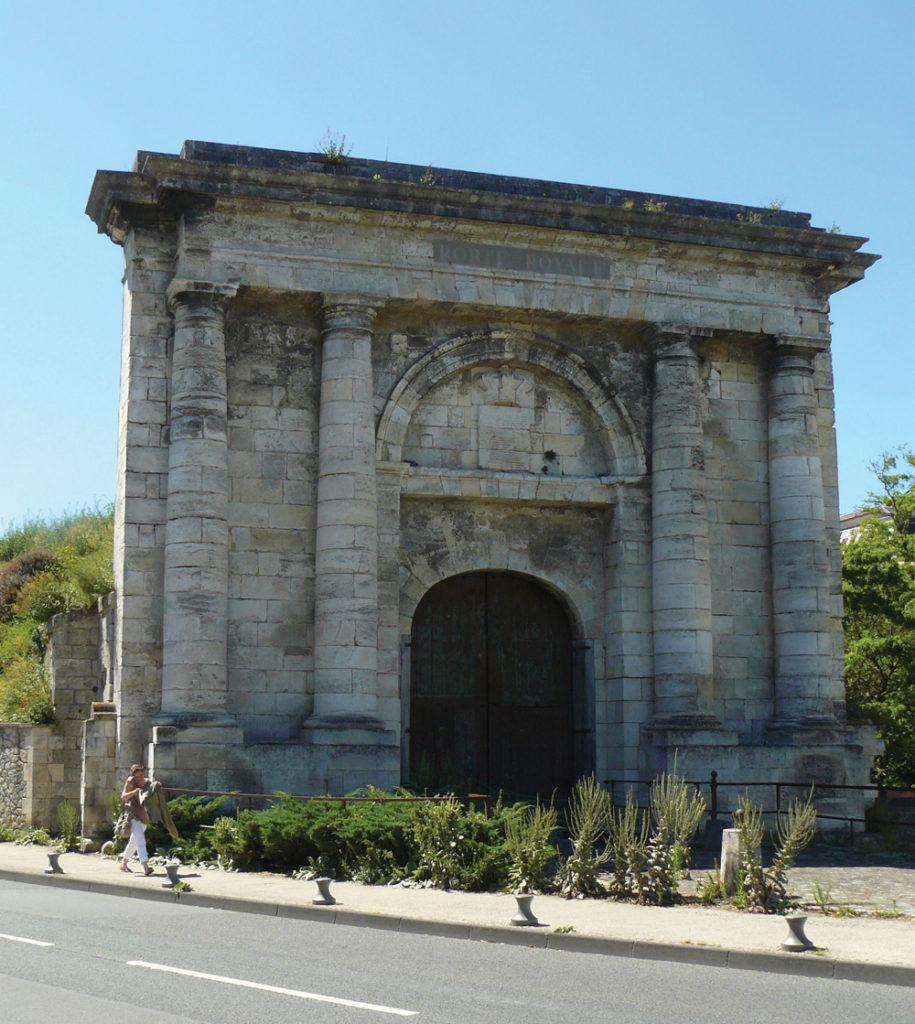
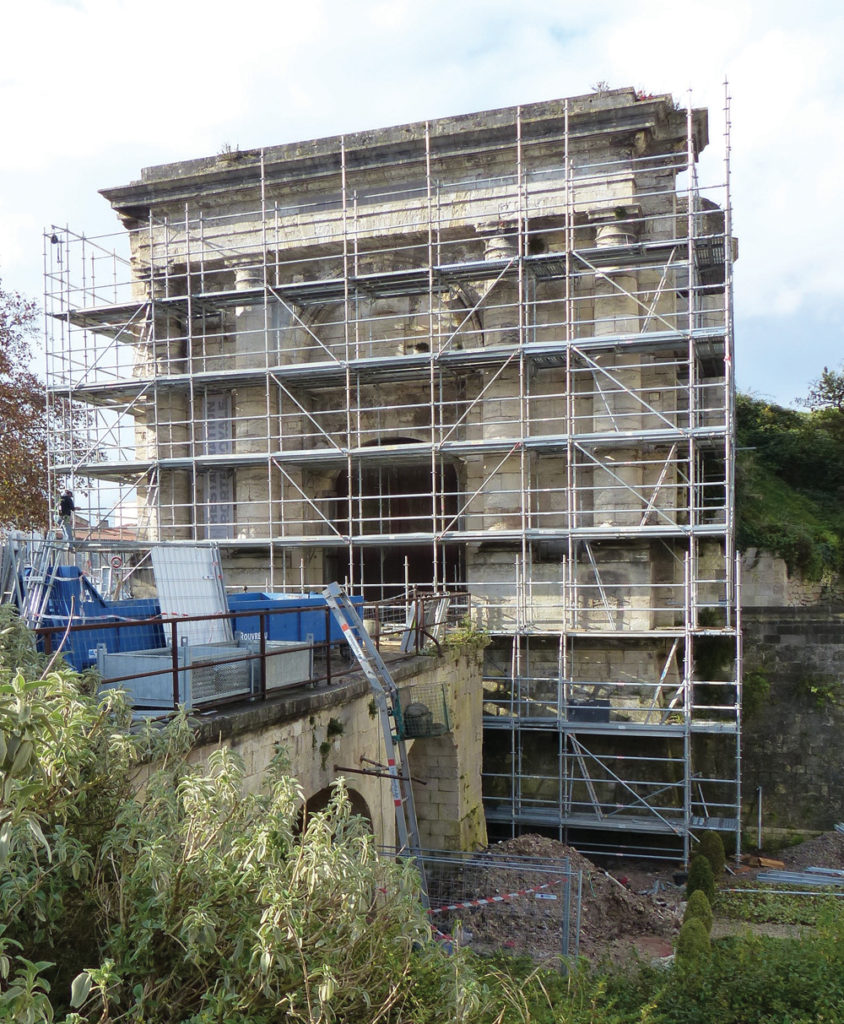
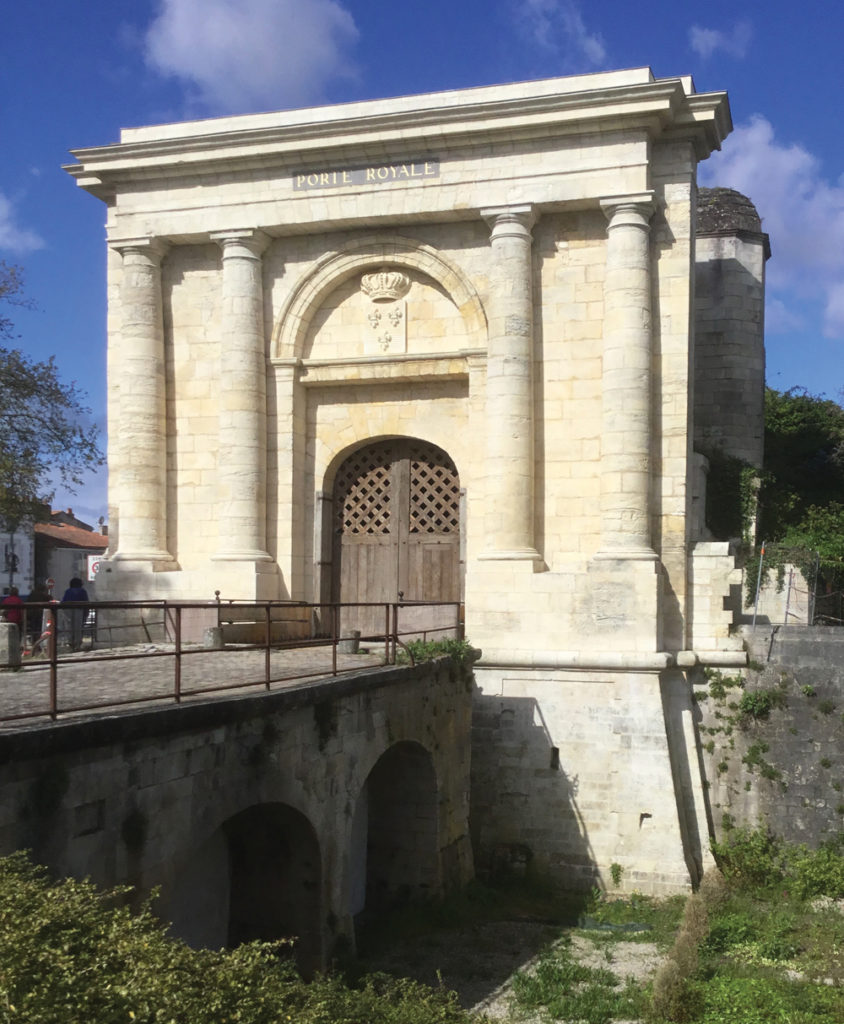
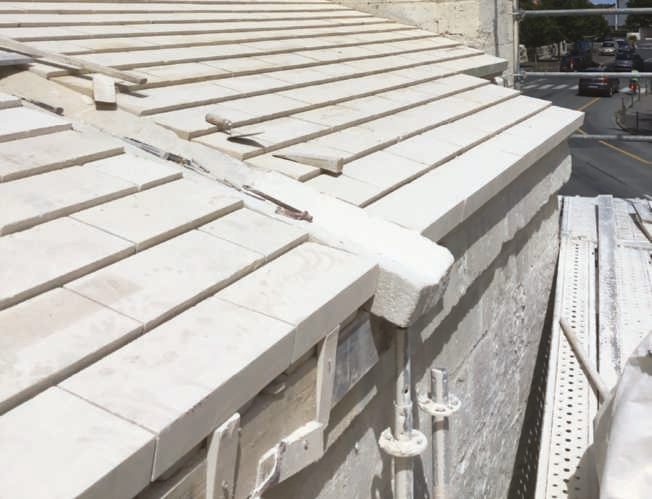
Cryogenic cleaning
Soot and particulate deposition related to pollution and smoke, accumulated on the protected parts of the rainwater runoff, have been cryogenically cleaned, thus preserving cullet, protection natural stone.

An adventure, men and know-how
On the elevation, many stones of the columns were drilled, some were repaired, and some were repaired; a whitewash of harmonization was applied on all the facings.
The carved coat of arms and crown located above the gate, whose heavily altered stones no longer allowed to read the sculptures, were deposited in conservation, and replaced by new stones resized and carved identically; three fleurs-de-lis have been brought back and encrusted to complete the arms of the coat of arms.
The inscription "Royal Door" was reported in the nineteenth century above the portal, the letters engraved on a slate slab were redorbed to gold leaf at the end of the work done on the east facade.
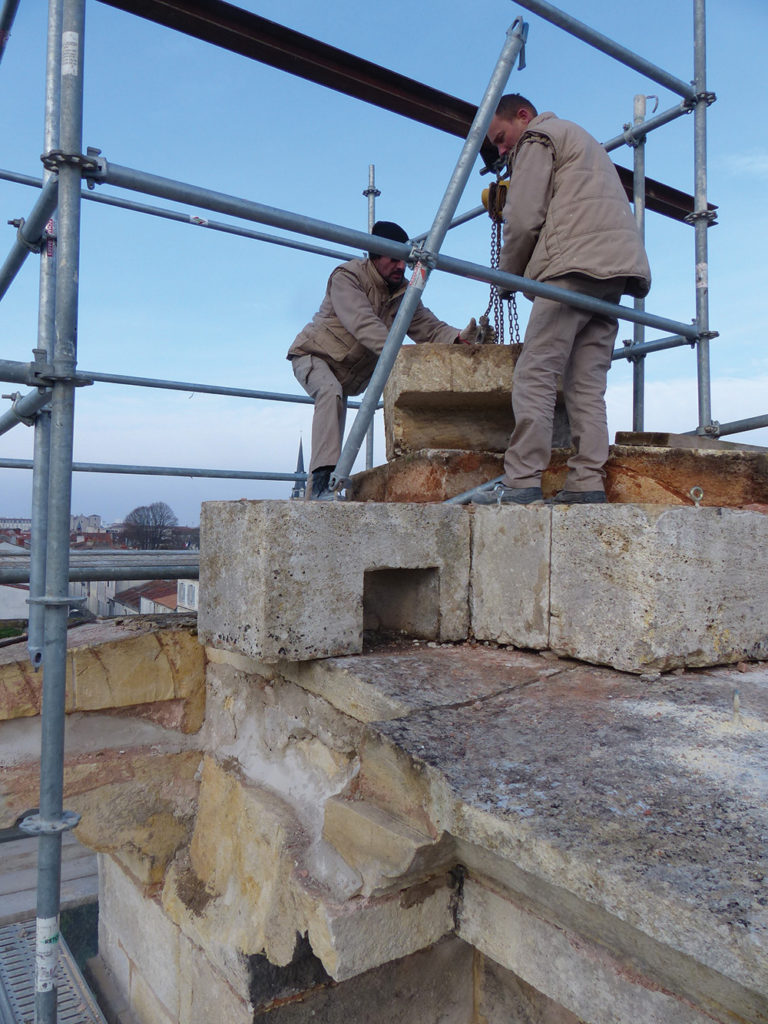
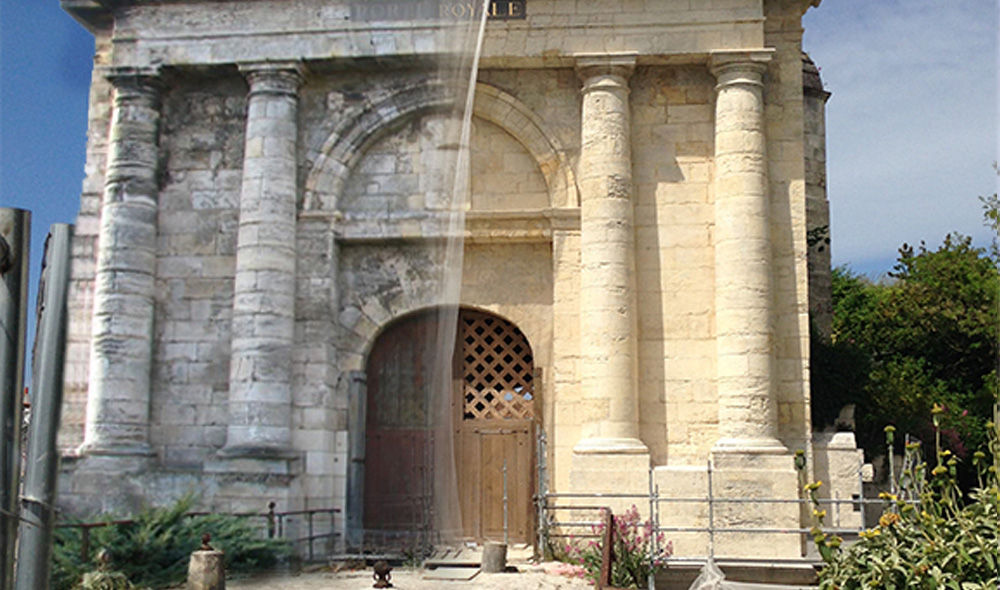
The portal of the Porte Royale
The heavy wooden gate was crushed by cryogenics, and the clear tracks of the upper parts were cleared from the planks.
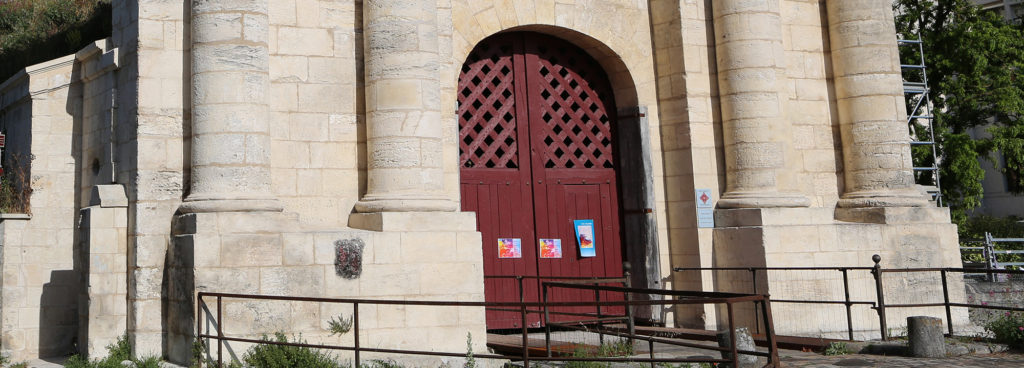
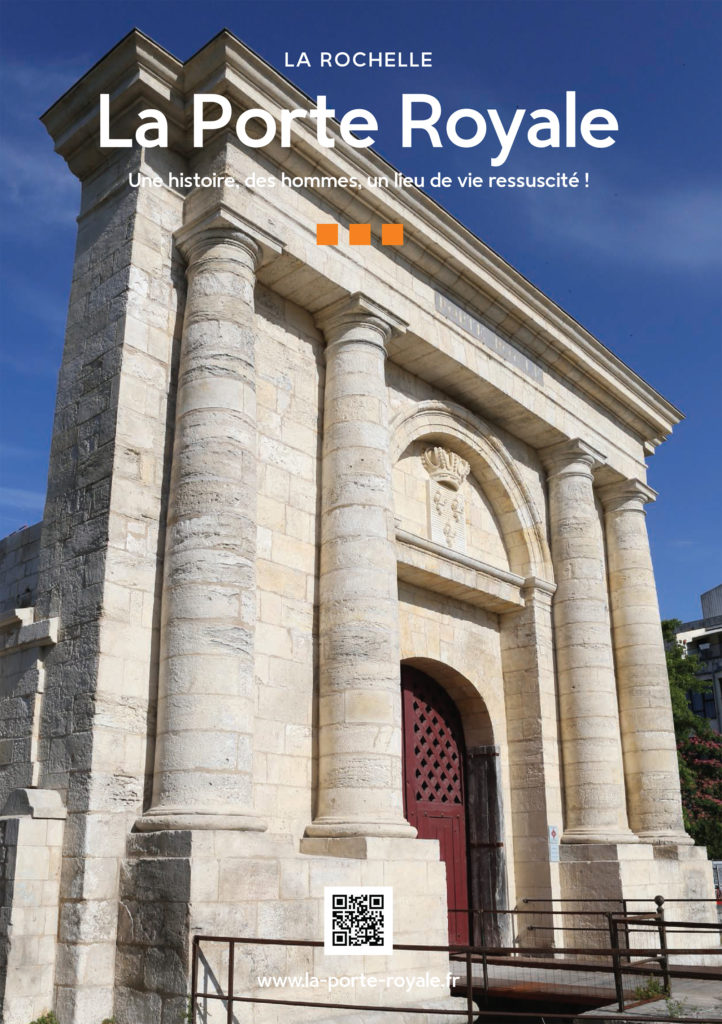
The magazine
Après 5 ans de travaux et d’animations de la Porte Royale il était nécessaire de marquer le temps avec un bel ouvrage qui immortalise notre action.
All the friends and actors of this beautiful project have mobilized to write and provide images and archives elements to make this beautiful brochure that allows to place the Royal Door in its past and current history.
A beautiful magazine to discover and browse with pleasure.
